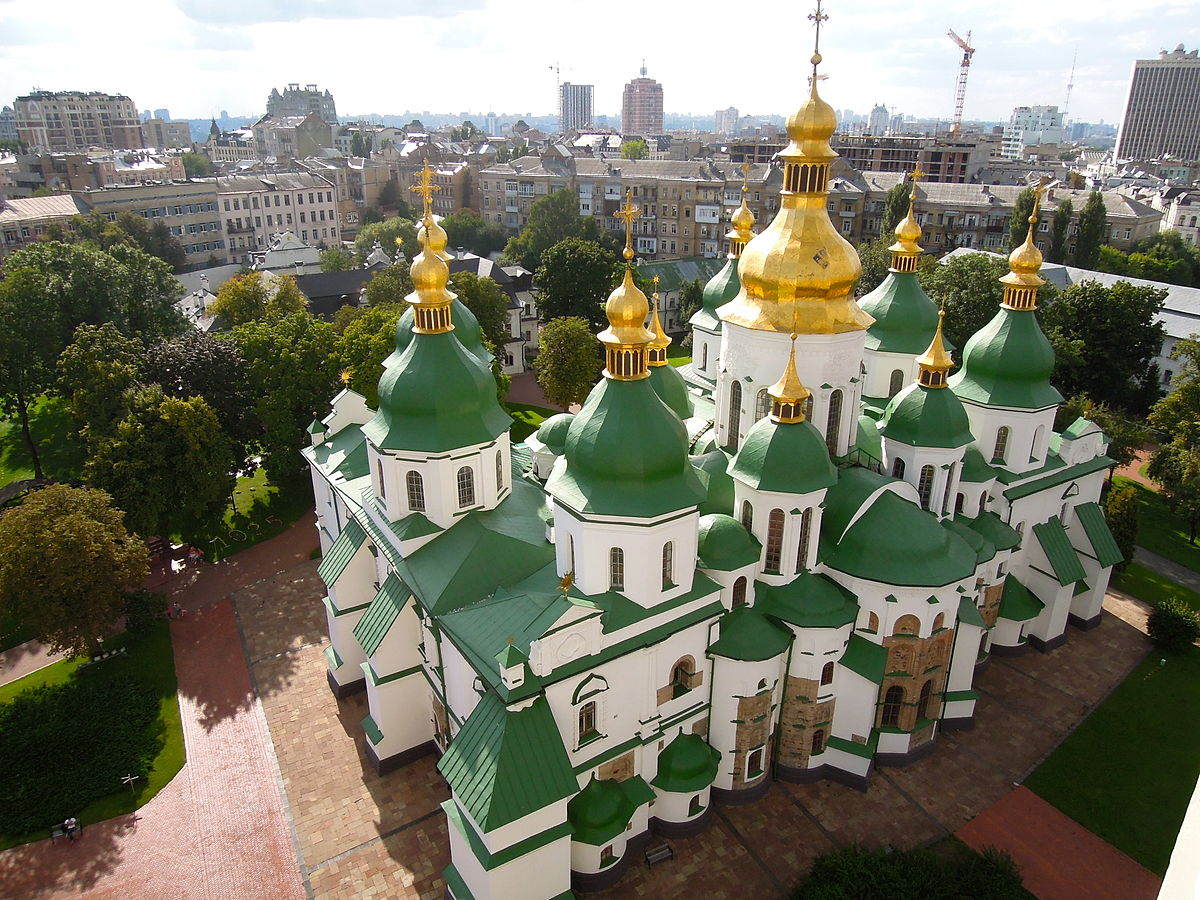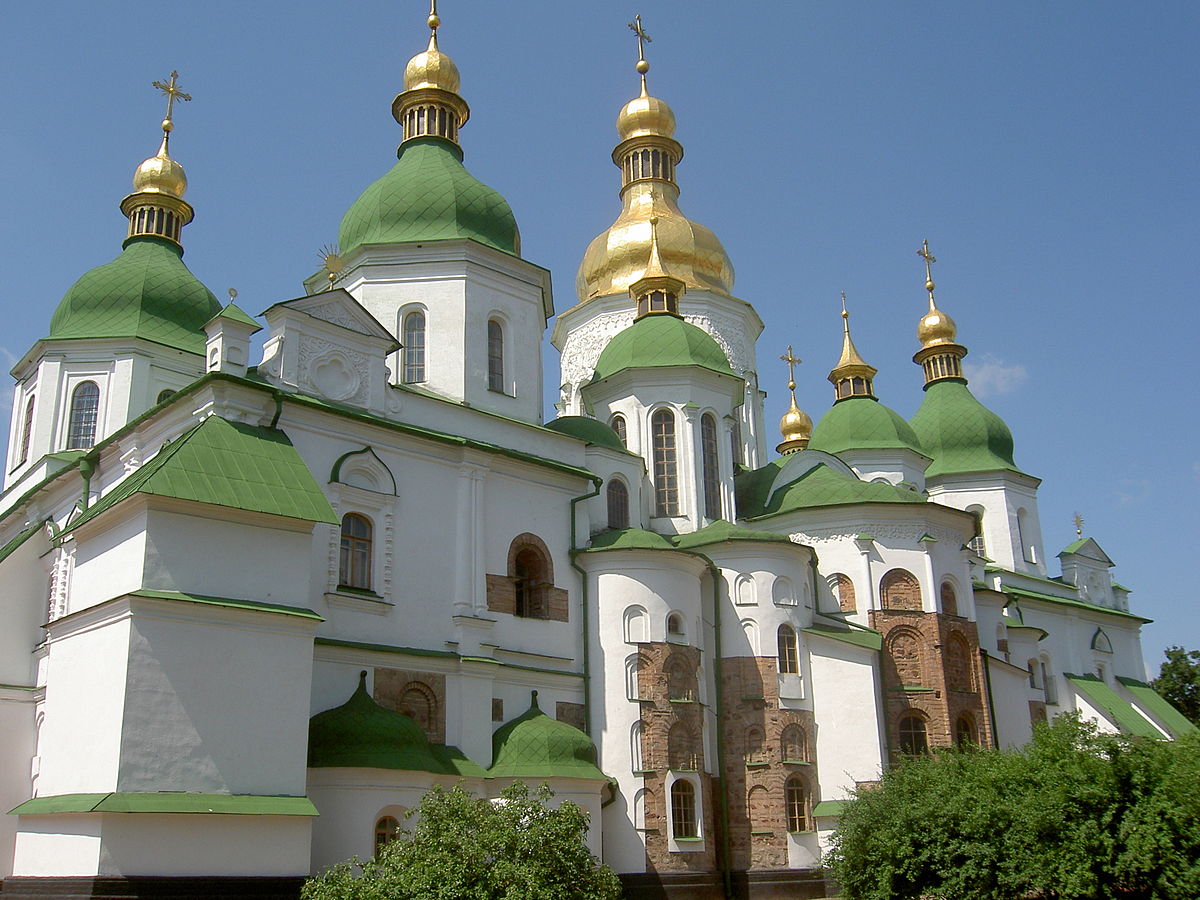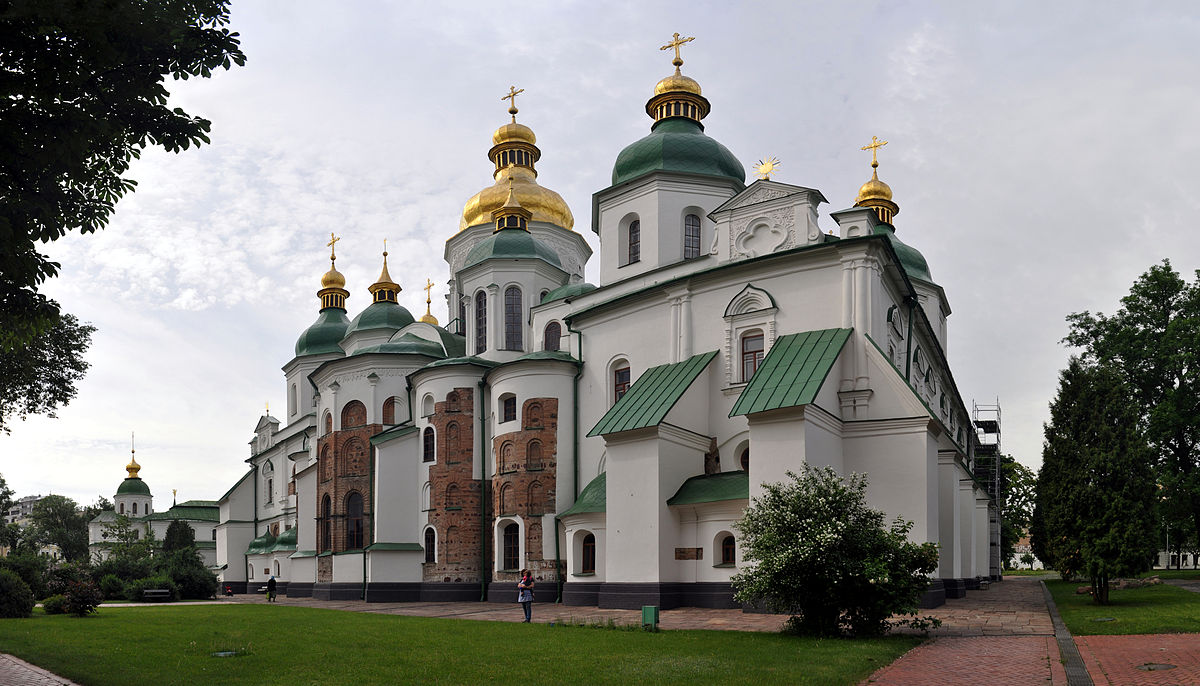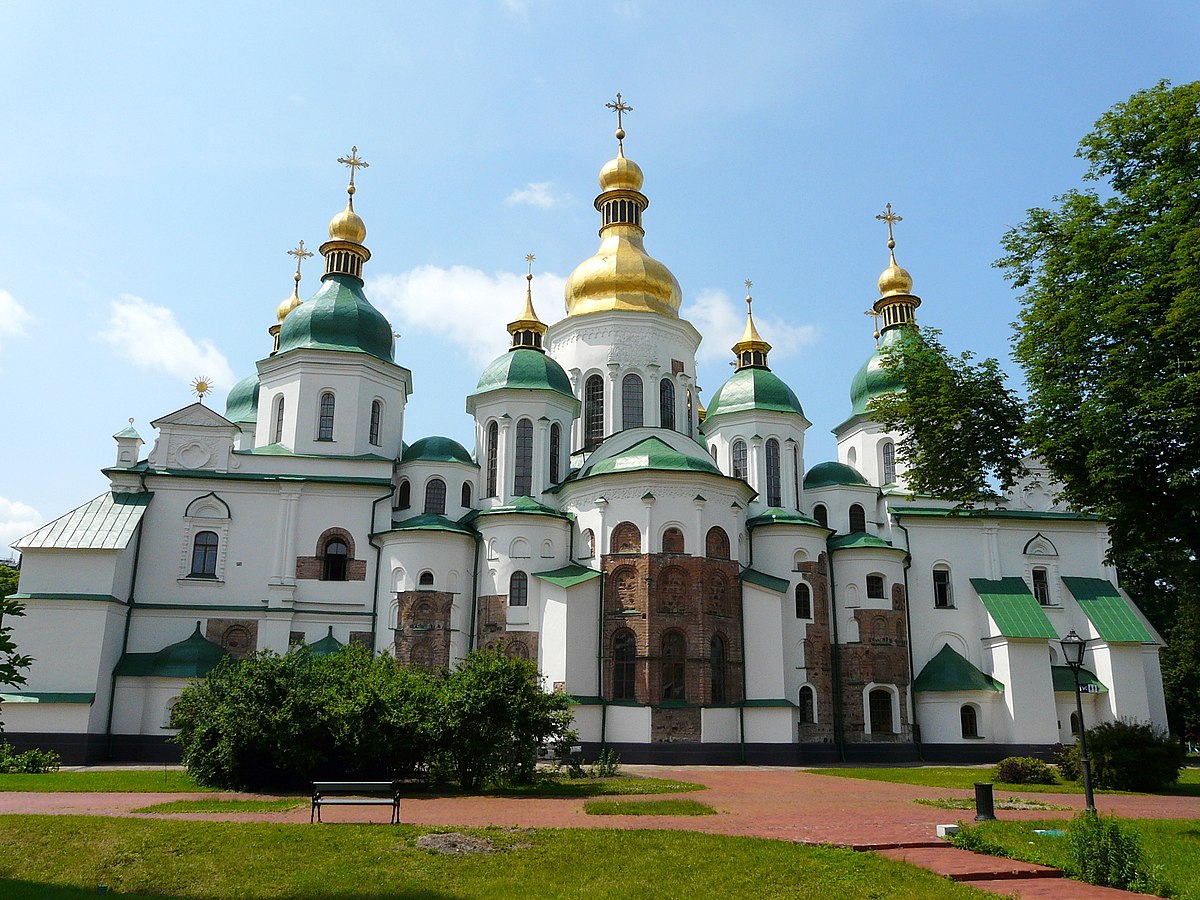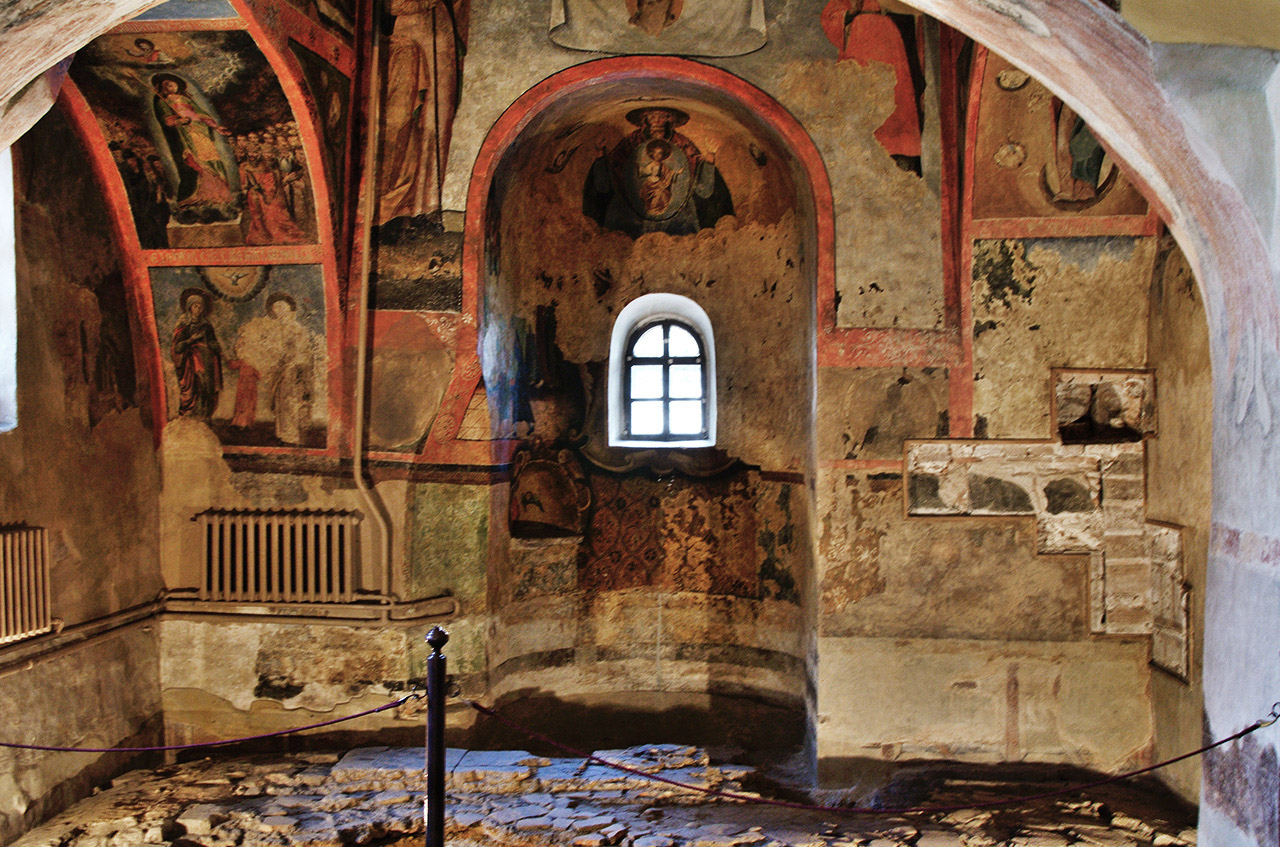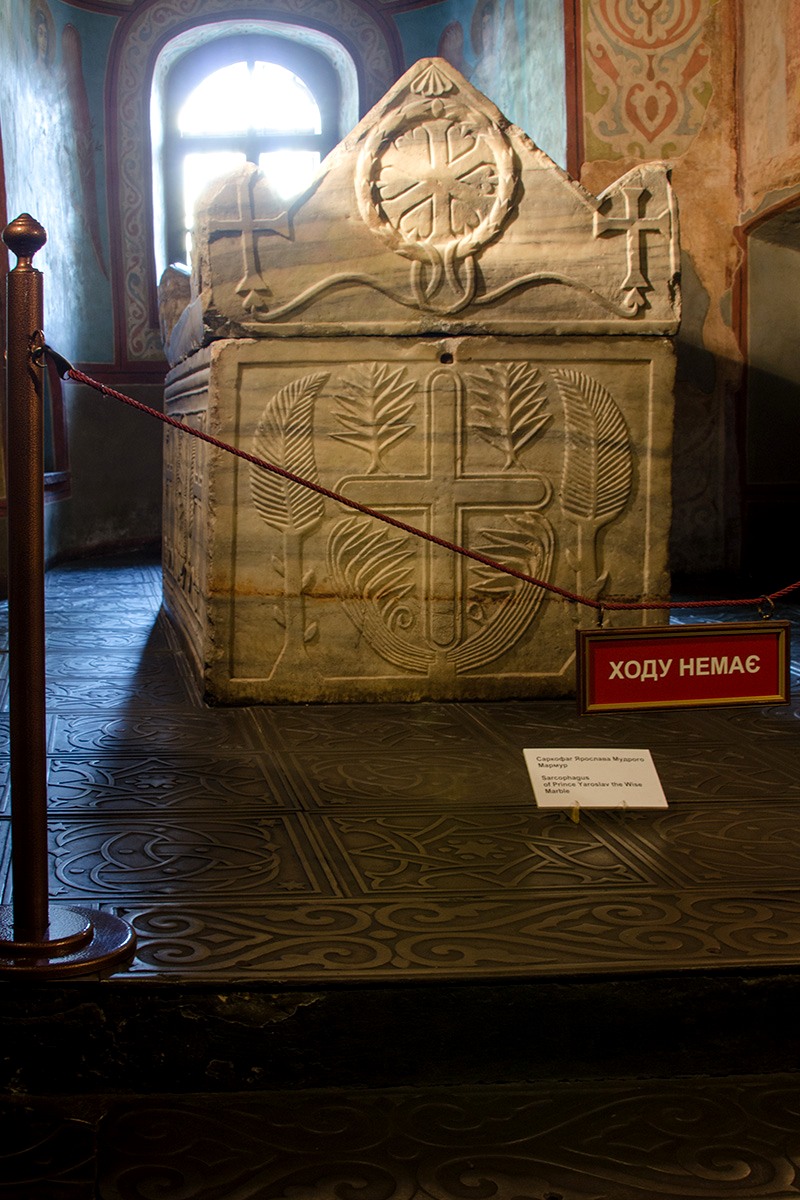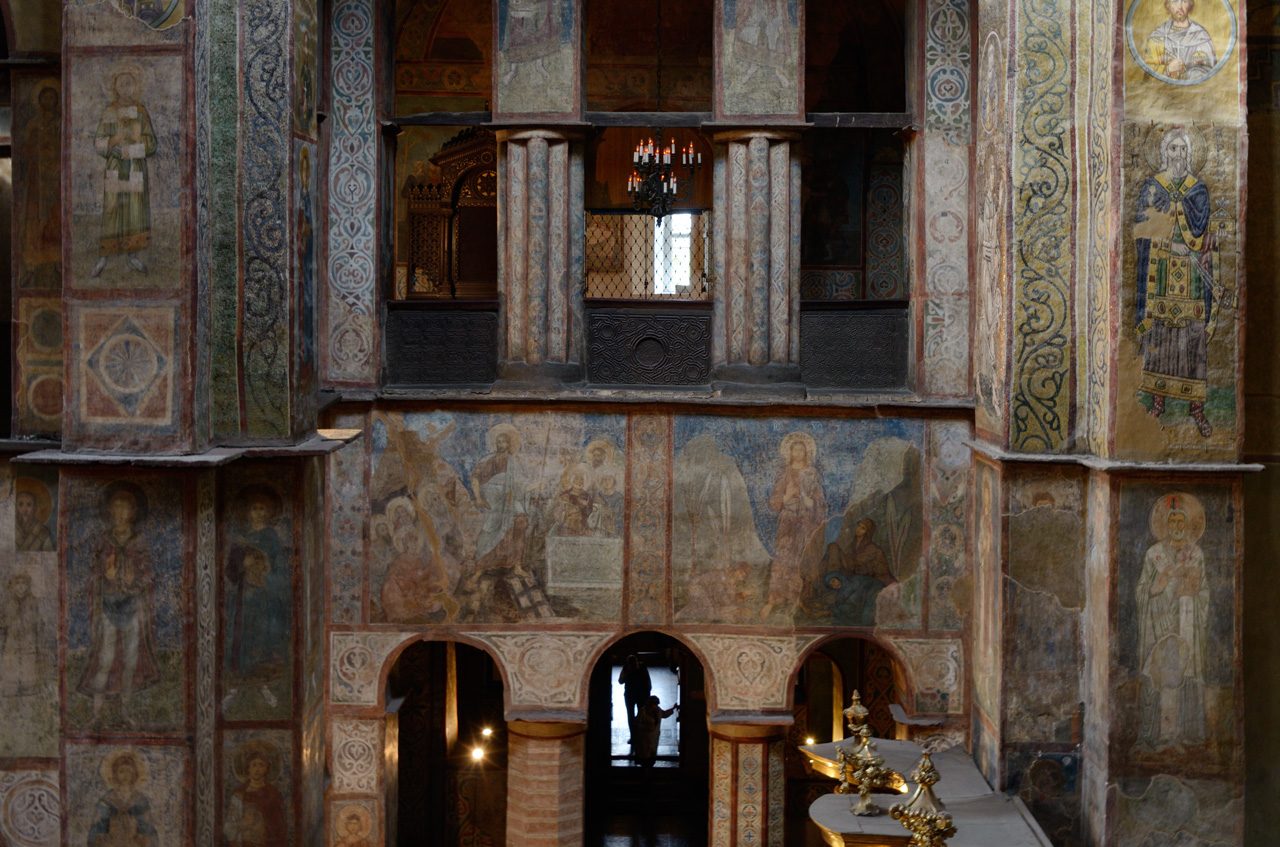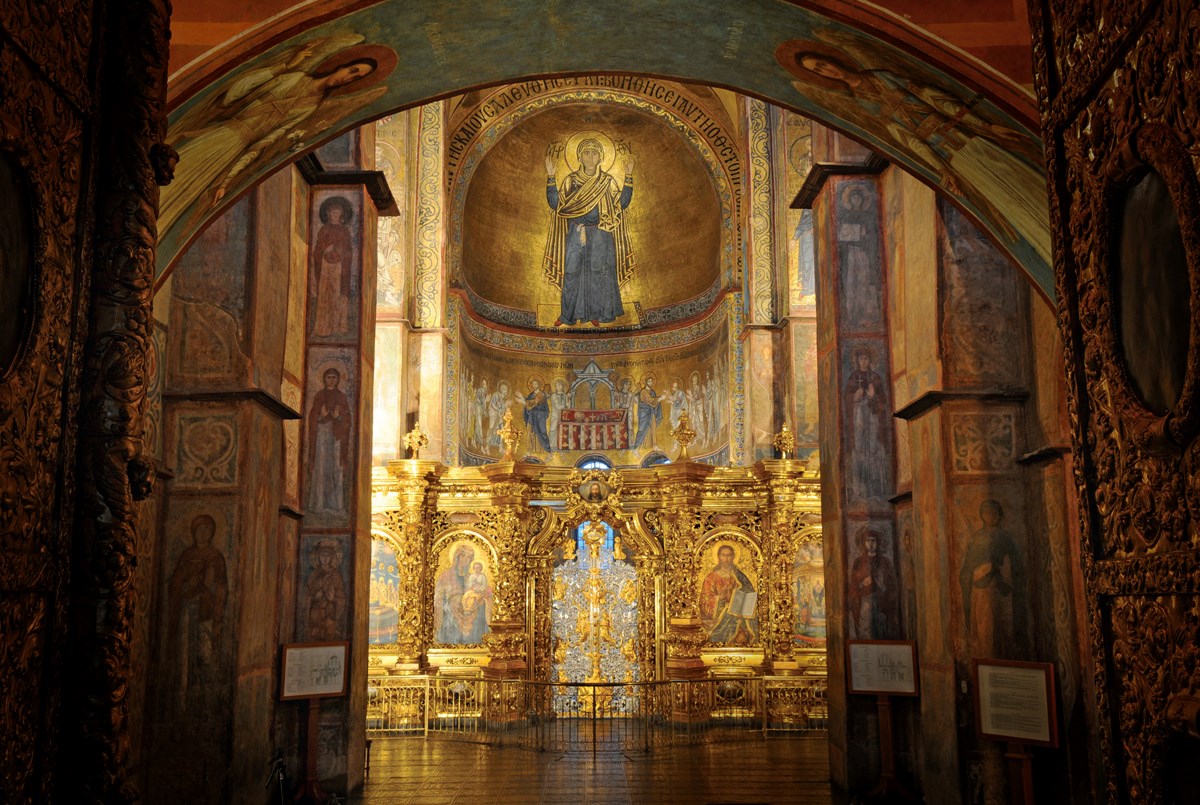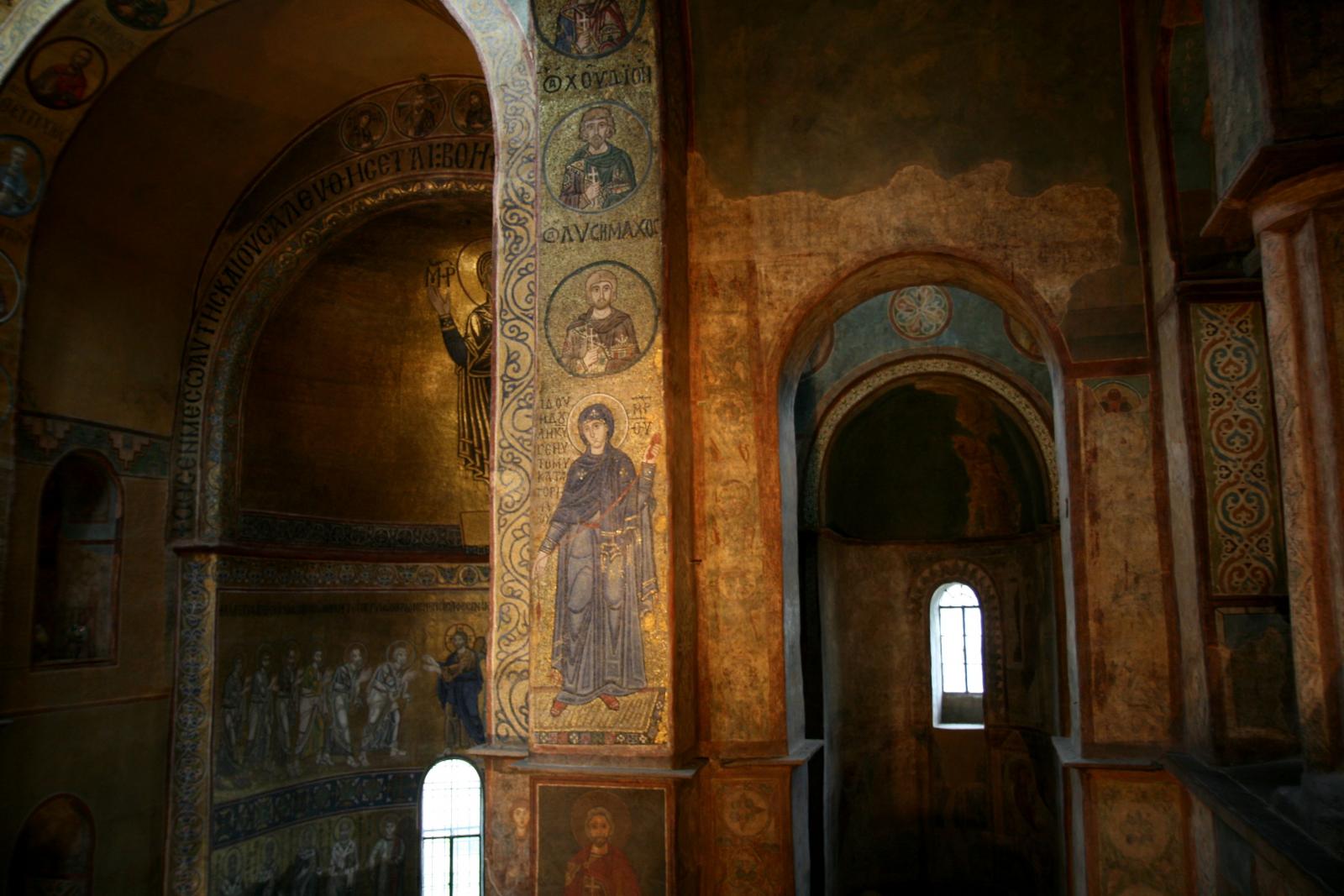Hagia Sophia was built in the first half of the 11th century by order of Prince Yaroslav the Wise on the site of the victory in 1036 over the Pechenegs. At the turn of the 17th-28th centuries, it was externally rebuilt in the Ukrainian Baroque style.
The interior of the cathedral has preserved the world’s largest ensemble of original mosaics and frescoes of the first half of the 11th century, made by Byzantine masters. The palette of mosaics includes 177 shades. In ancient times, mosaics marked the central dome and the altar, where worship took place; all other areas of the temple were decorated with frescoes. At the zenith of the dome there is a mosaic with the image of Christ Pantocrator (Pantocrator), around him there are 4 archangels. Of these, only one was preserved in the mosaic – in blue clothes, the rest were completed in the 19th century by M. Vrubel with oil paints. In the drum between the windows the figures of the twelve apostles are depicted (from the 11th century only the upper part of the figure of the Apostle Paul has been preserved); below, on the sails of the dome, the writing evangelists are depicted. Among them, only the figure of the Evangelist Mark has been preserved from ancient times. On the girth arches there are medallions with half-length figures of 40 Sebastian martyrs: 10 mosaic medallions on the southern arch and 5 on the northern arch have survived.
The cathedral’s most famous mosaic, Our Lady of the Unbreakable Wall, is located in the conch (vaulted part) of the central altar apse. Below it is depicted the Eucharist – the communion of the apostles with Christ, and even lower are the saints – the ancient holy bishops, the Fathers of the Church.
During Soviet times, it was an active temple until 1929; in 1934 it became a museum – the Sofia Reserve. Nowadays it is the core of the national reserve “Sofia of Kiev”, one of the largest museum centers in Ukraine, which also includes Golden Gate, St. Cyril Church and St. Andrew’s Church.
In 1990, the St. Sophia Cathedral, like Kievo-Pecherskaya Lavra, became the first architectural monument included in the UNESCO World Heritage List on the territory of Ukraine.
Since the cathedral building is part of the Sophia of Kiev National Reserve and is included in the UNESCO World Heritage List, it is prohibited to transfer it to any religious organization and to hold services in it. The exception is the day of August 24 – Independence Day of Ukraine, when representatives of religious organizations pray for Ukraine. The ensemble of the St. Sophia Cathedral includes monastery buildings of the 18th century included with it in the UNESCO list: the bell tower, the southern entrance tower, the refectory, the bakery, the bursa, the metropolitan’s house and the Zaborovsky gate.
The cathedral, as well as its grounds, were a burial place during the 11th–20th centuries. In ancient times, several princes were buried here, and later a number of metropolitans. In total, there were 5 princely burials in the cathedral: Yaroslav the Wise, Vsevolod and the Vsevolodovichs – Rostislav Vsevolodovich, Vladimir Vsevolodovich Monomakh, Vyacheslav Vladimirovich. The marble sarcophagus of Yaroslav the Wise has been preserved; On September 10, 2009, a scientific autopsy of the sarcophagus took place: a subsequent examination showed that there were no remains of Yaroslav in it (before that, scientists opened the sarcophagus of Yaroslav the Wise three times: in 1936, 1939 and 1964).
The name of Vladimir Monomakh is supposedly associated with the second marble tomb, preserved in the cathedral from antiquity – it has come to us empty, without a lid. The remaining princely tombs were lost.
There is information about the presence of underground premises near the cathedral. Several times, starting from 1916, only isolated attempts were made to study them, but it was never completed. According to one version, the legendary “Library of Yaroslav the Wise” could have been stored in these dungeons.
Next to St. Sophia of Kiev, within walking distance are St. Michael’s Golden-Domed Cathedral, Andreevskiy Spusk, funicular, Landscape Alley, Tithe Church and National Museum of the History of Ukraine.
Where is St. Sophia Cathedral located?
Vladimirskaya street, 24
(044) 278-62-62, 278-61-52
10:00 – 18:00 (bell tower 09:00 – 19:00)
